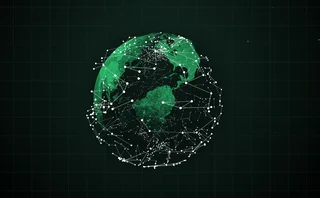
Bear Stearns Deploys Two Cray Supercomputers For Risk Analytics
Bear Stearns has bought two supercomputers from Cray Research for use by its risk management, derivatives and fixed income and departments.
The purchase is believed to be the most powerful supercomputer installation ever undertaken by a financial institution.
Bear Stearns plans to integrate the Cray machines with its existing global Unix systems architecture, where they will act as calculation servers for a variety of compute-intensive tasks, including global risk simulations.
The supercomputers comprise a 512-processor Cray T3D scalable parallel processing system and a Cray C94 supercomputer. Bear Stearns officials say the two machines will be provide risk managers worldwide with on-line risk reporting tools.
Fast work
"Cray delivered better performance in our day-to-day operations and also gave us more headroom for growth," says Peter Cherasia, the senior managing director in charge of Bear Stearns' financial analytics and structured transactions (Fast) group.
"We expect speed-ups on our Cray system to transform the way we do business and to give Bear Stearns traders and clients a significant advantage," he adds.
The New York-based investment bank expects to have its T3D and C94 machines fully configured and installed within the next few months.
It will then move into an extended parallel testing period before cutting over to live operations, says Cherasia.
Bear Stearns' Crays will be installed at its Whippany, New Jersey global data centre on a water-cooled, concrete-padded foundation with a custom power supply. The bank has taken delivery of both machines, he adds, pre-installed with a core set of Bear Stearns-developed analytics software.
The bank's Cray machines will be integrated with its existing network of Unix workstations and PCs. Bear Stearns' risk managers will use the Crays to generate intraday risk reports, rather than running them overnight on a batch basis.
Cherasia says the bank will initially focus on providing client access to the supercomputers in New York, before widening out to other US offices.
Once such domestic on-line access is comfortably up-and-running, the implementation team will start working on Bear Stearns' overseas centres, including London, Paris, Madrid, Tokyo, Singapore and Hong Kong.
The Fast group managed by Cherasia acts as a central analytics provider for all levels of the bank. It can focus on "the risks of a singular trade and its context, of a desk, of a floor, or of a department," he says.
The financial community's use of supercomputers has grown with the influx of quantitative research scientists into banks and securities houses, says a Cray spokesperson.
Cray's penetration into the financial services industry coincided with this workforce shift, starting off in the late 1980s and gaining momentum more recently as the vendor has configured its systems with features specifically geared to appeal to global financial organizations.
Last month, Silicon Graphics acquired 75 per cent of Cray Research in a tender offer. It is expected to acquire the remaining 25 per cent of Cray this June, says the Cray spokesperson.
Benchmark tests
In benchmark comparison tests undertaken by Bear Stearns and Cray, the combined supercomputer platform performed 30 to 45 times faster than the parallel processing Unix clusters that Bear Stearns is currently relying on, the spokesperson adds.
The workstation clusters required around 40 hours to perform bank-wide risk analysis or global positioning studies. The Cray platform performed the same tasks in under an hour. It reduced the time required to price a complex bond from an average five minutes to less than one-third of a second.
In addition to Bear Stearns, Cray's parallel and multiple processing machines are in use at Merrill Lynch, Citibank, Bank of America, the Federal Home Loan Mortgage Corporation, Fuji Bank Capital Markets (DE&T, October 3, 1994) and Atlantic Portfolio Analytics & Management (DE&T, July 25, 1994).
Only users who have a paid subscription or are part of a corporate subscription are able to print or copy content.
To access these options, along with all other subscription benefits, please contact info@risk.net or view our subscription options here: http://subscriptions.risk.net/subscribe
You are currently unable to print this content. Please contact info@risk.net to find out more.
You are currently unable to copy this content. Please contact info@risk.net to find out more.
Copyright Infopro Digital Limited. All rights reserved.
You may share this content using our article tools. Printing this content is for the sole use of the Authorised User (named subscriber), as outlined in our terms and conditions - https://www.infopro-insight.com/terms-conditions/insight-subscriptions/
If you would like to purchase additional rights please email info@risk.net
Copyright Infopro Digital Limited. All rights reserved.
You may share this content using our article tools. Copying this content is for the sole use of the Authorised User (named subscriber), as outlined in our terms and conditions - https://www.infopro-insight.com/terms-conditions/insight-subscriptions/
If you would like to purchase additional rights please email info@risk.net
More on Technology
Dismantling the zeal and the hype: the real GenAI use cases in risk management
Chartis explores the advantages and drawbacks of GenAI applications in risk management – firmly within the well-established and continuously evolving AI landscape
Chartis RiskTech100® 2024
The latest iteration of the Chartis RiskTech100®, a comprehensive independent study of the world’s major players in risk and compliance technology, is acknowledged as the go-to for clear, accurate analysis of the risk technology marketplace. With its…
T+1: complacency before the storm?
This paper, created by WatersTechnology in association with Gresham Technologies, outlines what the move to T+1 (next-day settlement) of broker/dealer-executed trades in the US and Canadian markets means for buy-side and sell-side firms
Empowering risk management with AI
This webinar explores how artificial intelligence (AI) can strip out the overheads and effort of rapidly modelling, monitoring and mitigating risk
Core-Payments for business leaders: why real-time access to payment data is key to long‑term business success
Business leaders require easy access to timely, reliable and complete information across post-trade processes. Aside from the usual requirements of senior managers to optimise for risk, revenues and costs, they increasingly need to demonstrate to their…
Risk applications and the cloud: driving better value and performance from key risk management architecture
Today's financial services organisations are increasingly looking to move their financial risk management applications to the cloud. But, according to a recent survey by Risk.net and SS&C Algorithmics, many risk professionals believe there is room for…
Machine learning models: the validation challenge
Machine learning models are seeing increasing demand across the capital markets spectrum. But how can firms improve their chances of gaining internal and regulatory approval for these type of models?
Most read
- Breaking out of the cells: banks’ long goodbye to spreadsheets
- Too soon to say good riddance to banks’ public enemy number one
- Industry calls for major rethink of Basel III rules







